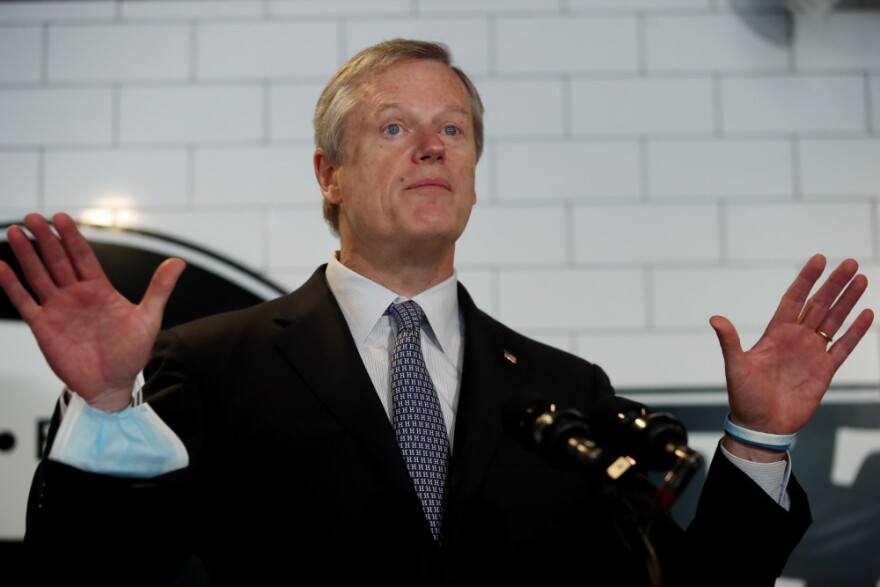Some western Massachusetts school districts — in areas deemed by the state to be "low-risk" for COVID-19 — are responding to a push to return to in-person learning.
The state Department of Elementary and Secondary Education (DESE) sent a letter to 16 districts currently using remote learning. The letter requested district plans to re-open schools by next week — and threatens an audit of those efforts.
West Springfield was among the districts that received the notice.
Mayor Will Reichelt also chairs the town's school committee. He said his district plans to consider a hybrid learning model in late October.
Reichelt said he wants schools to be open, too.
"But we don't want to rush it, either," he said. "We want to make sure we do it right, and we do it safely — so our students and staff are safe, and we aren't bouncing back and forth between remote and hybrid, like some districts already have."
The Mohawk Trail Regional District in Franklin County also received the letter. In a statement, the district said it has a task force in place to review health data weekly to determine the best learning conditions.
"Our top priorities have been and remain the health and safety of our students and staff, while educating ALL of our students during a pandemic," the statement said. "The decision for a remote start was not taken lightly, but was made after we heard the clearly expressed concerns from our families and staff."
Massachusetts Secretary of Education James Peyser this week told NEPM that when school districts submitted plans this summer for remote or in-person learning, as well as a combination of the two, the goal was always to get students back to in-person learning eventually.
The state doesn't have the authority to order a particular method of learning, but it can evaluate whether a school district is providing an adequate education.
"It's going to be incumbent upon the Department of Elementary and Secondary Education to evaluate whether students are getting an adequate education," Peyser said. "And in particular, whether they're getting sufficient time on learning, which is required under state law and regulation."
Peyser said requesting a timeline for a return to in-person learning isn't a punitive measure.
"One of the things we're trying to do, and hope to do, is engage with these communities, and these districts, at a more detailed or granular level, to both understand why they have made this choice, and maybe to help them in bringing their students back to school as soon as possible," he said.
On Wednesday, Governor Charlie Baker also reiterated his desire to see more children return to school.
Baker urged districts to stick with their plans for in-person learning, and not to make snap decisions based on a single party or cluster of infections. He chided districts that opted to begin the school year with remote-only learning despite very small infection rates in their communities, telling them that the science supports a return to the classroom.
"Local officials run their local schools. We understand that," Baker said at a press conference in Lowell. "But the state has an obligation to ensure that local officials are providing the best possible education in these difficult circumstances to kids in their communities."

While Baker has deferred to local authorities on a lot of decisions about how to enforce state public health guidance during the pandemic, his administration has taken a more forceful approach when it comes to schooling. He said cities and towns can bounce up and down from week to week in the state's color-coded system for tracking virus transmission by municipality, but said local leaders should be looking at three weeks' worth of data at a time.
"Getting kids back to the classroom, obviously, is something that we believe is critically important to our success, and to our kids' success, going forward," he said. "And it's very important for people in communities to look at three weeks' worth of data, which is four weeks' worth of information, before they make decisions about changing their plans with respect to schools."
Baker said the public health data for most Massachusetts cities and towns supports a return to school, and districts should trust that the state's contact tracing program will help identify and quarantine anyone exposed to COVID-19 by a large gathering, party or other event without backtracking from school plans.
"In many cases, it's because of a single event or a single institution that creates that, and that's why we think it's important for people to look for trends, and trends don't happen in seven days," Baker said.
The other western Massachusetts school districts that were put on notice about remaining in remote learning include: East Longmeadow, Pittsfield, Berkshire Arts and Technology Charter Public District, Hoosac Valley Regional and Gill-Montague.
This report includes information from State House News Service.





